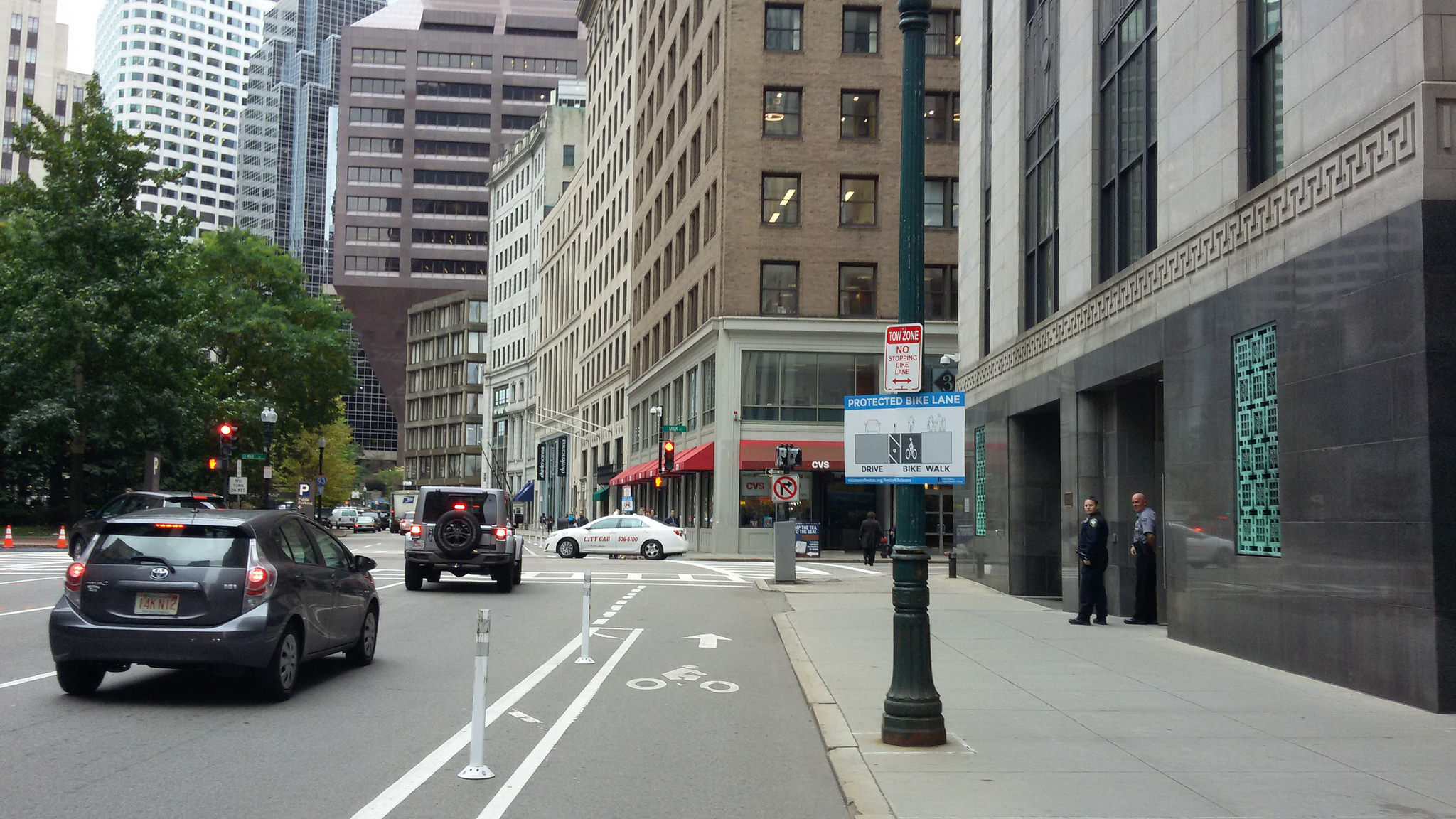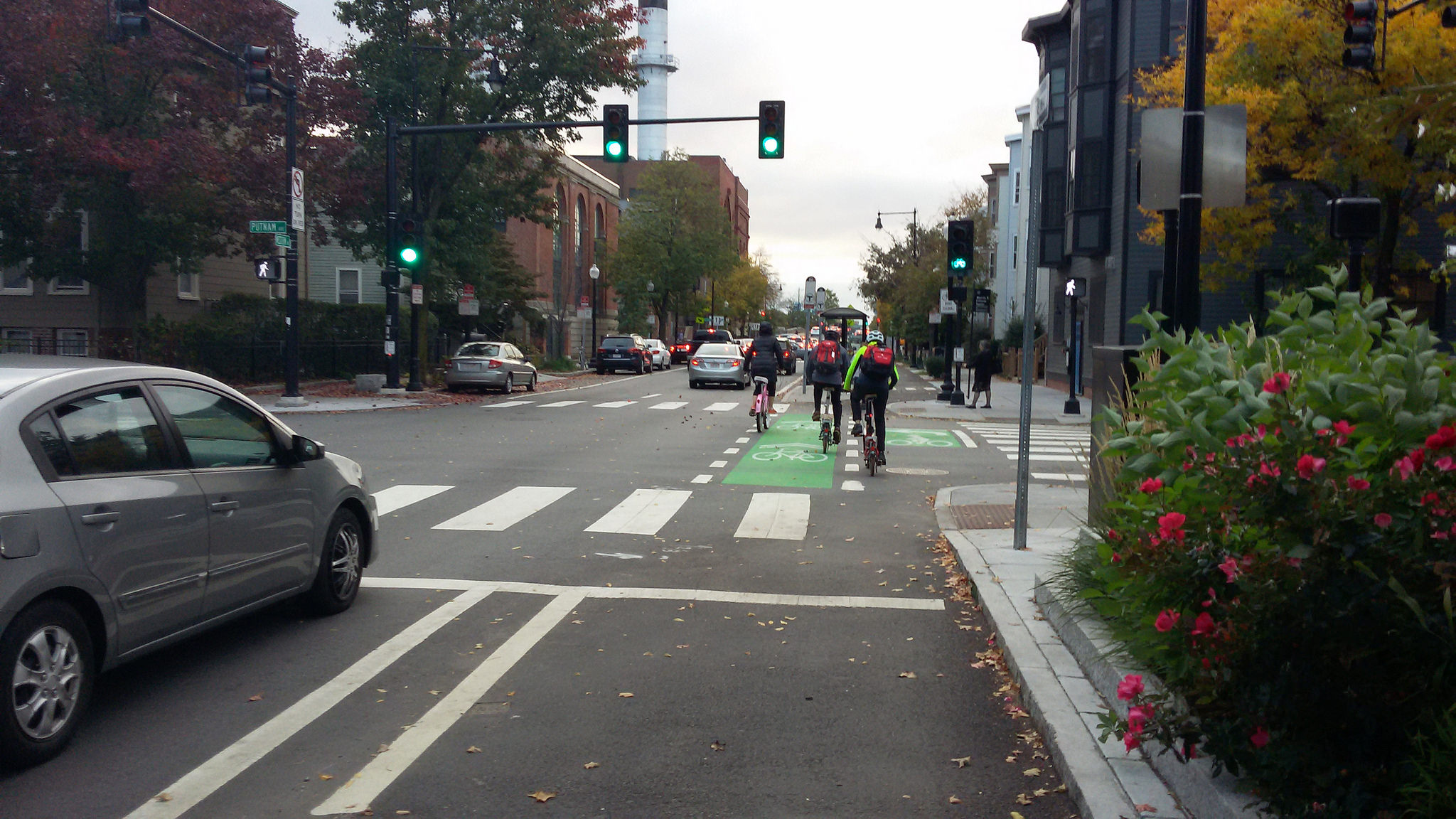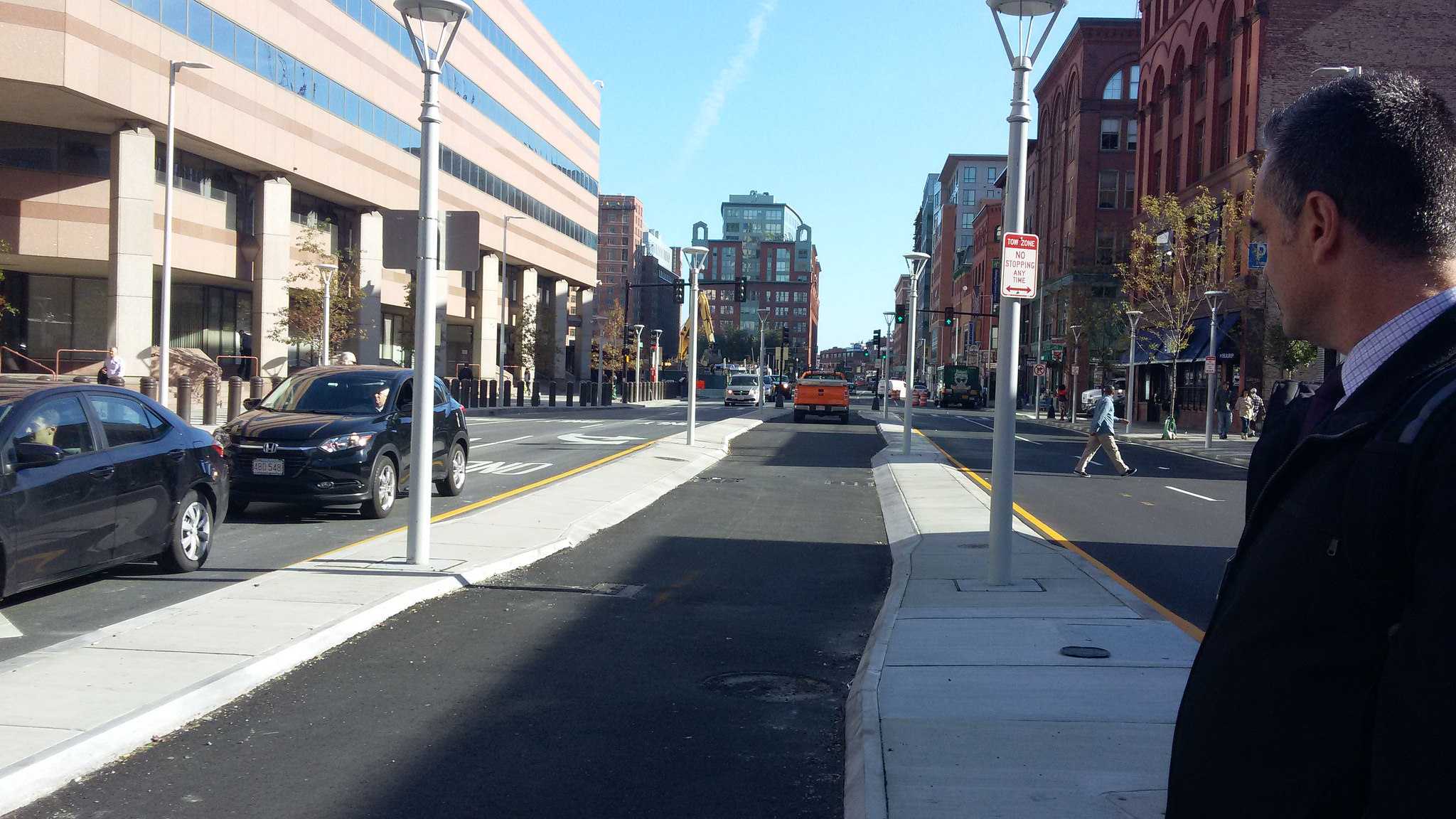If I had a dollar for every time I've recited the "litany" of my destinations (Seattle-Vancouver-Denver-Chicago-Toronto-Boston-New York), well, I could probably add another stop to my itinerary. Although, I was been slightly unsettled a few times while in North America when someone has listened to my recital and then responded "why Boston?!?"

Boston, like the other US cities on my list, has been a Green Lane Project focus city. It's also interesting because it's the capital of the State of Massachusetts, whose department of transportation (MassDoT) has recently released what many people across the country have lauded as the best guide for planning and designing separated bike facilities. At the NACTO conference I met Lou Rabito, who had managed the development of the MassDoT guide - a few weeks later, on the other side of the US, I also got to catch up with him in Boston.
The MassDoT guide sets out very clearly some rules about where turns across cycleways should be protected, based on the directions of the cycleway, roadway, and turning volumes (see Chapter 6, pages 106-107). The magical 150, which I've mentioned in previous posts, pops up again, as a base case for the short turn across a one-way cycleway, but there are lower limits for combinations that are considered riskier. The main justification for this base threshold seems to be that it comes from CROW (the renowned Dutch design manual for bicycle traffic). But CROW specifically recommends against allowing filter turns across a two-way cycleway, because motorists don't expect cyclists in the contraflow direction. Massachusetts doesn't seem to have any two-way cycleways at signalised intersections, yet. Despite my digging in other locations, I've not yet found anywhere that does allow filter turning across two-way cycleways and has actually studied the safety effects.
I should point out that Boston has some very close neighbours - particularly the cities of Cambridge, Somerville and Brookline - so I've seen and heard about some of the different approaches between the cities and the tensions that go along with coordinating their transport systems. I've met with a few people from around the area. I've had a few comments that the MassDoT guide is great, but it's going to take a while to reach that ideal.

There are some separated cycleway projects happening in Boston - I saw the construction of the first stages of one of these, along Staniford Street and Causeway Street. It's going to be a two-way cycleway, which will include a "quarter of a protected intersection" at one end, and also a section down the centre of the roadway. The central section will necessitate two main transition points; one with fully-protected movements at a busy intersection, the other I understand will be a combination of a signalised crossing sort of priority crossing across a slip lane.

So, visiting Boston (and its neighbours) in the fall has been a great experience. But, these vagabond shoes are longing to stray...

